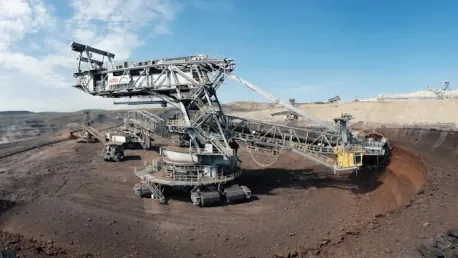The transformation of the soon-to-be-closed Yancoal mine in the Hunter region of New South Wales (NSW) into a major renewable energy project exemplifies the innovative repurposing of former mining sites. Known as the Stratford Pumped Hydro and Solar project, this initiative aims to leverage the existing mining voids and infrastructure left from the coal mine set to close in 2024. Despite its designation as critical state significant infrastructure in July, the approval for this ambitious project remains uncertain. This delay underscores the inherent complexities and challenges in navigating both regulatory frameworks and environmental obligations, particularly when balancing new opportunities in renewable energy with traditional post-mining land rehabilitation requirements.
Yancoal, the mining company behind the project, is faced with reconciling its legal obligations to rehabilitate the land while simultaneously exploring new prospects in renewable energy. During a NSW parliamentary inquiry into post-mining land use, Yancoal representatives emphasized their commitment to fulfilling rehabilitation responsibilities without circumventing existing regulations. However, skepticism from Members of Parliament (MPs) reflects broader concerns about the practicality and feasibility of integrating renewable energy projects into post-mining land use strategies. This tension highlights the need for a nuanced approach to regulatory policies that can accommodate both traditional land rehabilitation and innovative renewable energy solutions.
The Case for Renewable Energy in Post-Mining Land Use
The NSW Minerals Council has been a vocal advocate for exploring alternative uses for post-mining land, emphasizing the potential of existing mining voids as assets for projects like pumped hydro-electricity. Since 2014, there has been a growing recognition of the value of these voids in supporting renewable energy initiatives. This shift underscores the need for adaptive policies that can keep pace with evolving technological capabilities and market demands. The council’s chief executive, Stephen Galilee, along with the deputy secretary of NSW Resources, Georgina Beattie, have both stressed the importance of creating an enabling environment for such transitions. Their advocacy points to a broader trend within the industry to reimagine the purpose of former mining sites, turning them into productive components of the renewable energy infrastructure. This perspective not only addresses environmental and sustainability goals but also offers economic benefits, potentially attracting new investments and fostering innovation within the sector.
The urgency to adapt regulatory frameworks is further emphasized by the ongoing feasibility studies conducted by major mining companies such as BHP. At sites like the Mt Arthur mine, similar assessments are being undertaken to determine the viability of converting former coal mines into renewable energy hubs. These studies reflect an industry-wide acknowledgment of the substantial contributions that repurposed mining sites can make to future energy supplies. Both small and large stakeholders within the mining and energy sectors are recognizing the significant, yet often untapped, potential of these voids. Consequently, the push for policy evolution is seen as critical to unlocking new opportunities and ensuring the effective integration of renewable energy projects within post-mining land scenarios.
Navigating Regulatory Challenges and Emerging Opportunities
The transformation of the soon-to-close Yancoal mine in New South Wales’ (NSW) Hunter region into a large-scale renewable energy project showcases the innovative repurposing of former mining sites. Dubbed the Stratford Pumped Hydro and Solar project, it plans to use existing mining voids and infrastructure from the coal mine, which is slated to shut down in 2024. Although declared critical state significant infrastructure in July, the project’s approval is still pending. This delay highlights the challenges in navigating regulatory frameworks and environmental obligations, especially when trying to balance new renewable energy opportunities with traditional post-mining land rehabilitation requirements.
Yancoal, the mining company spearheading the project, is grappling with the need to fulfill legal obligations for land rehabilitation while exploring renewable energy prospects. At a NSW parliamentary inquiry into post-mining land use, Yancoal representatives affirmed their commitment to rehabilitation without bypassing regulations. Nonetheless, skepticism from Members of Parliament (MPs) reflects broader concerns about the practical integration of renewable energy projects with post-mining land uses. This tension underscores the necessity for nuanced regulatory policies that can accommodate both traditional land rehabilitation and innovative renewable energy solutions.









